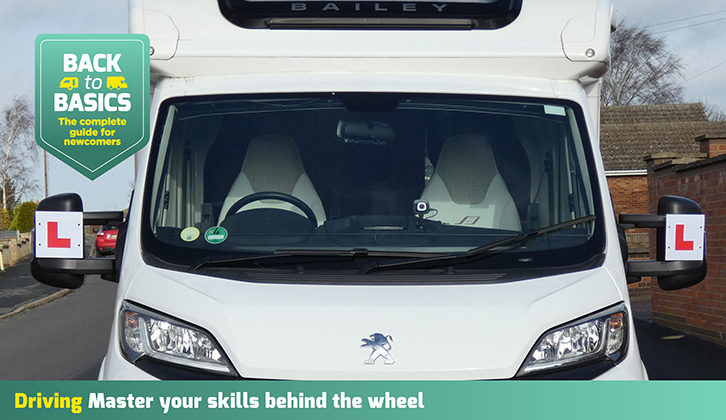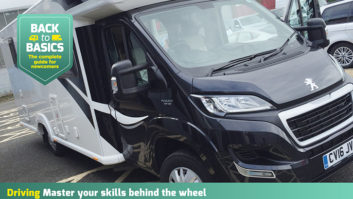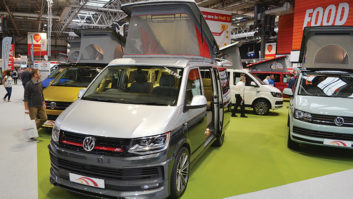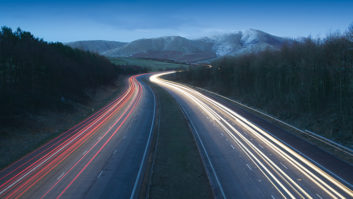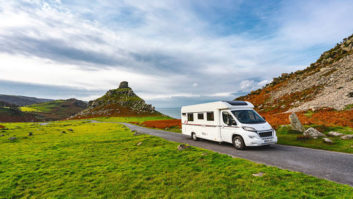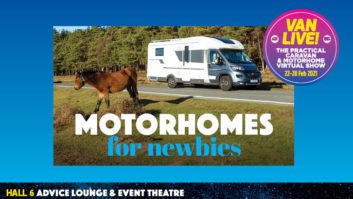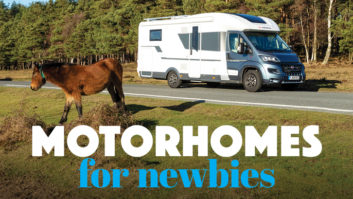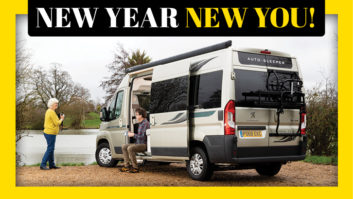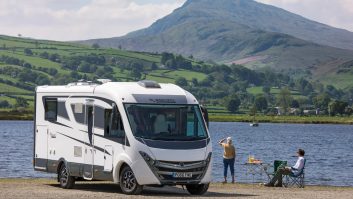Driving a motorhome can be a daunting prospect when you’re a beginner. However, Gentleman Jack is on hand with his top tips to help you master the basics and take your motorhome driving to the next level.
STEP ONE Before turning the key…
Watch the Weight
It is essential to establish the MTPLM (Maximum Technically Permitted Laden Mass) of the motorhome. This is the heaviest the motorhome can be with everything and everyone on board. It is the first weight on the official weight plate, which is normally located on the front crossmember under the bonnet.
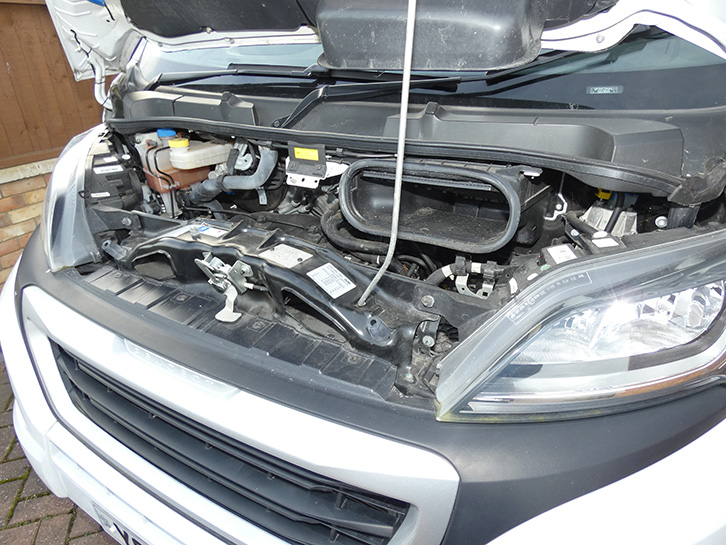
Anyone who has passed their car driving test in the UK can drive any motorhome up to 3,500kg MTPLM providing there are no further licence restrictions. If the MTPLM is between 3,501 kg – 7,500kg, Group C1 is required on the driving licence, previously an automatic entitlement if the car driving test was passed before 1st January 1997 and the driver is under 70 years of age. Younger drivers can add group C1 to their licence by undertaking a course of tuition and an assessment; older drivers should retain the entitlement by successfully passing a medical.
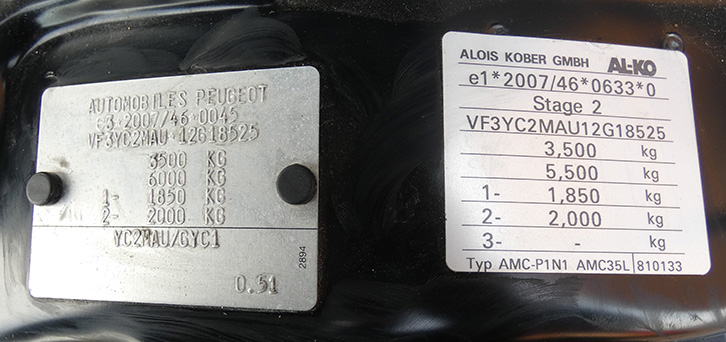
Always use a pre-departure checklist…here:
PRE-DEPARTURE CHECKLIST
INTERIOR
- Windows & rooflights locked [ ]
- Everything stowed securely [ ]
- Lockers/cupboards/drawers locked [ ]
- Hook-up lead stowed [ ]
- Gas turned off [ ]
- Fridge door locked, 12V selected [ ]
- Control panel checked [ ]
EXTERIOR
- Walk around/look underneath [ ]
- Wind-out awning retracted [ ]
- Bikes secure on rack [ ]
- Exterior-access locker doors secure [ ]
- Elevating-roof lowered and secured [ ] (campervans only)
Apply a sticker to the reverse side of the sun visor that shows the vehicle’s height and width in both metric and imperial units.

Climb into the cab, adjust the seat, mirrors, and make sure that you know how to turn the lights on, operate the hazard lights, sound the horn, deploy the turn indicators, and that you can comfortably apply and release the parking brake. The pedals are often further apart than in some cars, and some are offset. Try the following whilst stationary…place your foot on the accelerator and without looking down transfer it to the brake pedal. Keep practising until it comes naturally.
Finally, when was the last time you read the Highway Code? Enough said?
STEP TWO Confidence building
It is similar to driving a car, but because motorhomes are bigger and heavier, greater concentration is required. On the first few trips, turn off the radio/music player and any mobile phones.
You are not alone!
The Caravan and Motorhome Club, Camping and Caravanning Club, plus some driving schools, organise motorhome manoeuvring tuition courses. Many sat-navs can be set to take into consideration high/heavy vehicles when route planning.
Walk this way
Walk around the motorhome and observe that there is ‘a lot of it’ behind the rear wheels. Thus, when emerging from a narrow opening – say your drive – always proceed straight-ahead until the rear is clear, before turning left or right. Changing direction prematurely may cause ‘tail swiping’ of the gate posts, or whatever. Note that the mirrors stick out further than the bodywork. Thus, if the mirrors fit through a gap, the motorhome will!
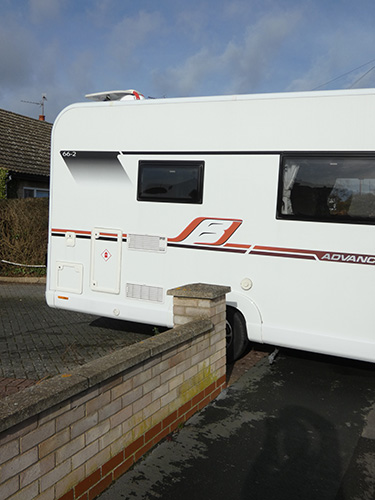
Initially, stick to quiet and wide single-carriage local roads. Drive ‘laps’ of a 5 -10 mile circuit to gain confidence, without having to worry about the route. Practise glancing upwards, both when looking ahead and side-to-side…in order to spot overhanging tree branches and similar obstructions. Always follow ‘M-S-M-M’ (Mirrors – Signal – Mirrors again – Manoeuvre).
Entering the flow of traffic
Motorhomes are slower to accelerate than cars. Wait for a large gap and don’t ‘barge-in’.
Placing the vehicle
Keep a safe distance from the kerb without wandering out-of-lane. Regularly glance in both door mirrors.
Cornering
Gently apply the brakes a good distance from the corner so that the motorhome is in equilibrium when changing direction. Approach speed should be slower than that in a car, as motorhomes lean more when cornering.
Junctions
A motorhome’s wheelbase is longer than a car’s, so don’t cut corners and risk mounting the kerb. Look in the bottom of the appropriate door mirror as you turn to see where the back wheel is. Alternate between looking ahead and at the back wheel. As with emerging from a narrow gateway, go forward before turning the steering wheel…and take your time. When negotiating a ‘T’-junction of single carriageways, wait for the traffic to be clear in both directions, as it is likely that the central white line of the road to be joined will have to be crossed in order to successfully achieve the manoeuvre. It might be concerning at first, but will quickly become second nature.
Reversing
We strongly advise that all motorhomes should be fitted with a camera on the back. These are commonly known as ‘reversing cameras’, but can be activated at any time. A common rookie error when ‘backing-up’ is to just rely on the camera and forget to look in the door mirrors as well! Gain confidence in an empty car park.
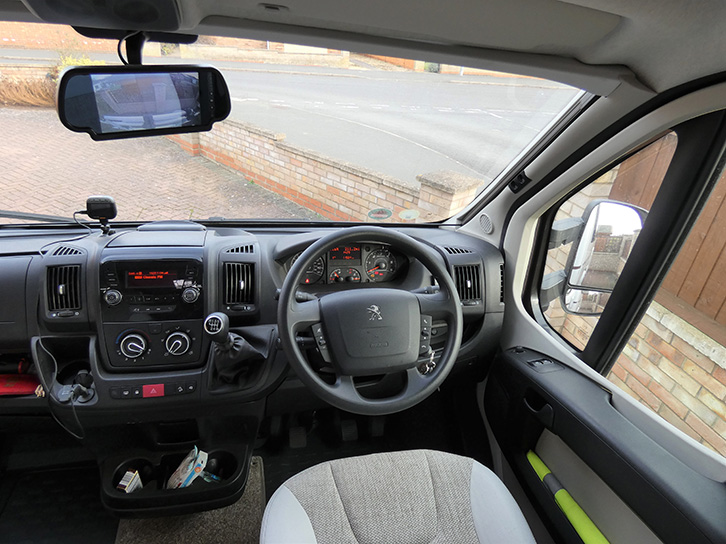
STEP THREE Advanced Motoring
Motorways and dual carriageways
If the `van has a cruise control, use it, as it is easy to increase speed without realising it. When changing lanes remember ‘M-S-M-M’. Overtaking demands double-checking in the nearside mirror that the motorhome is well clear of what has been passed, before returning to the original lane.
High winds
Motorhomes can be susceptible to buffeting by high winds on exposed stretches of motorway and when crossing long bridges. ‘Rule of Ten’ applies here. If the motorhome’s affected, gradually reduce speed by 10 miles an hour. Not happy? Slow down by another 10mph, and so on.
Steep driveways/Ferry ramps
A long rear overhang behind the rear wheels increases the possibility of grounding. Take great care and progress at a slow walking pace. Reduce the effect of the gradient by approaching the slope at an oblique angle.
Finally
The journey is as important as the destination, so make it an integral part of the trip by stopping at places of interest en-route and taking lots of breaks.
Having a dash cam can also provide some peace of mind when you’re on the road – take a look at our best dash cam for a motorhome guide if you’re after one.
You’ve mastered the basics of how to move your ‘van – it’s now time to find a destination to head to! If you’re after some touring inspiration, take a look at our guide to the best motorhome parks, where we reveal top locations to stay at from across the country.
If you’ve enjoyed reading this article, why not get the latest news, reviews and features delivered direct to your door or inbox every month. Take advantage of our brilliant Practical Motorhome magazine SUBSCRIBERS’ OFFER and SIGN UP TO OUR NEWSLETTER for regular weekly updates on all things motorhome related.
